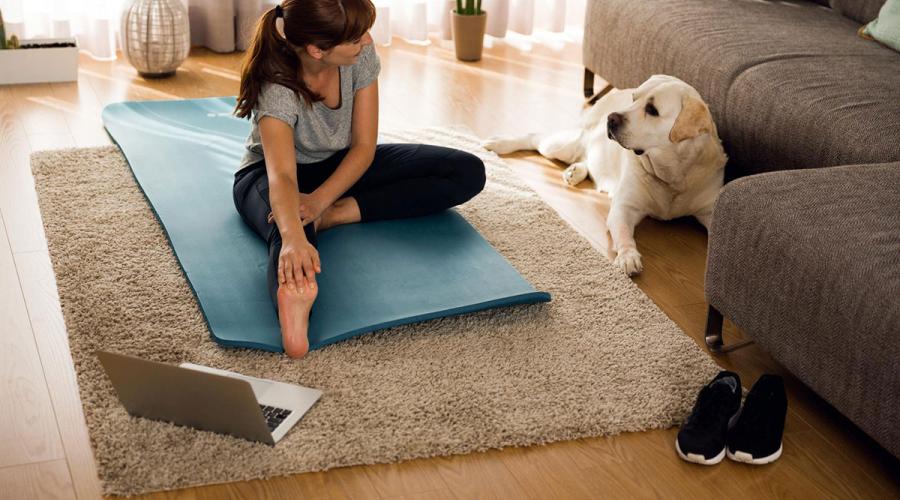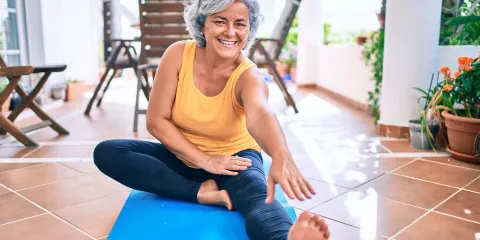
You know that staying active is an important part of staying healthy, but there’s no one right way—or right place—to exercise. Some people prefer to work out at a gym; others, at home. Whatever your preference, planning ahead can be helpful.
Work out at home.
Exercising in the privacy of your home is convenient and inexpensive, though it requires more self-discipline and structure than going to a gym. The key is having a variety of options you can fall back on. Keep a few workout videos and a set of dumbbells at home. A treadmill can provide a good option to fit in exercise during bad weather or odd hours.
For a useful home gym, you need to plan a bit. For relatively little money, you can create an effective home workout set-up that will tone your entire body. Here are a few recommendations for inexpensive equipment that is easy to use and store.
- Stability ball: A stability ball provides options for toning, strengthening and stretching. The ball is typically used for abdominal exercises such as crunches.
- Free weights: A set of dumbbells, in weights from 3 to 20-plus pounds, offers light muscle toning to intermediate strength training. Less expensive than machines, dumbbells provide flexibility and variety.
- Resistance bands: Resistance bands or tubes provide another option for strength training. They’re easy to store, come in a variety of sizes and resistance levels and can be used in numerous ways.
- Step bench: A step bench—a 6- or 8-inch-high platform—can be used for both cardiovascular workouts and strength training.
- DVDs: Exercise DVDs also offer variety. Use ones that focus on two or three different types of exercise.
Join the gym.
You might find a class setting to be more motivating and challenging than working out alone. Group fitness classes offered through a gym or recreation center add variety to your routine, allow you to discover new exercise options, and provide an instructor who will oversee your techniques.
“Good instructors have plenty of energy, enthusiasm and knowledge of the activities they are teaching,” says Tracie Rogers, Ph.D., chair of the kinesiology department at AT Still University in Arizona.
If you are new to group fitness, you might try the following:
- Check out a fitness center’s class schedule and ask friends and fitness managers for recommendations.
- Look for instructors who are certified in group fitness.
- Find a class that will push you a little but won’t push you over the edge. If the class works at a high intensity or if the movements are too difficult, your risk of injury increases and the experience won’t be much fun.
- Join a class that is convenient and works with your schedule.
- Get to the first class early and introduce yourself to the instructor so he or she can offer individual help, if needed.












